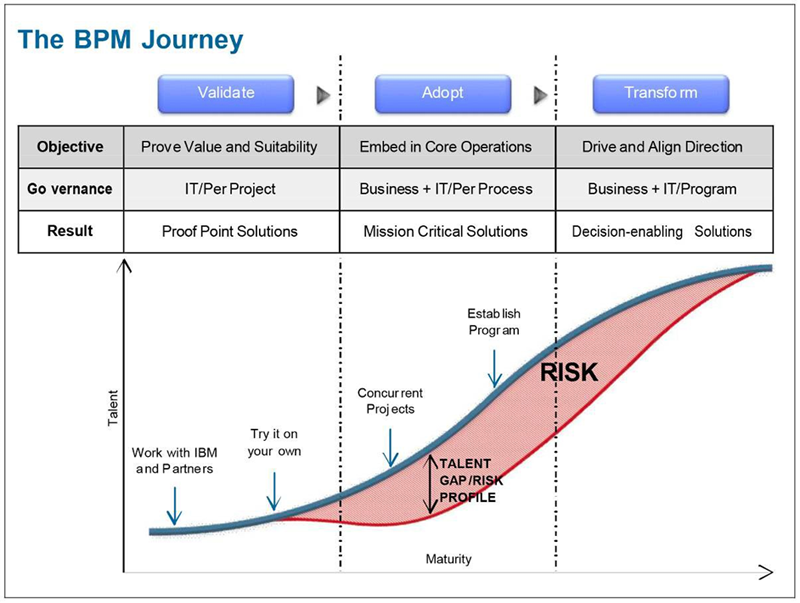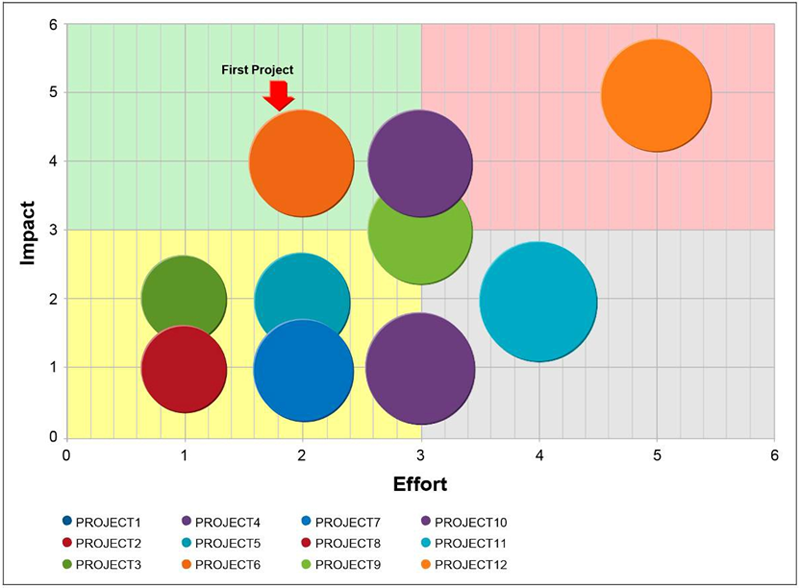Thinking big, starting small, scaling fast
As with any journey, carefully choosing your path and building skills along the way is tantamount to successfully reaching your goals. Building a BPM program starts with a single successful project. It might not be your first project that champions agile delivery methods, and it might not be your second. But you do not scale to a BPM program until you achieve a successful delivery of a business process project with agile software development. Success should be measured in duration, business value, and reflection from project participants. A successful agile project becomes a proof point that your operational business can collaborate with the technology team to deliver business value in a short, iterative fashion. This first win garners stakeholder support essential for additional funding for new versions and new projects. It is important that your early project wins be chosen wisely to deliver business value (three to one ROI or better) and gain executive level visibility. A project that is too complex, or too political, could endanger the momentum of your BPM program. A project with too little visibility does not garner stakeholder support for the next project. Choose your projects wisely as you think big, start small, and scale fast.
Scaling to a BPM program with successive project wins
Attempts to shortcut to complex projects with high visibility and significant ROI before learning tough lessons on lower complexity projects and achieving maturity in your teams' agile software development capability jeopardizes or postpones BPM program success. Achieving success on those first few low complexity projects is a necessary first step on your journey. You now have a pool of skilled individuals that can develop simple and medium complexity processes. You might be thinking about creating a BPM Center of Excellence (CoE) to organize teams, prioritize projects, distribute best practices, and manage shared process components and toolkits. Until these resources are truly mature, your organization's ability to drive and align business direction is limited to targeted processes.
Entering the transformative period of BPM
Business transformation can be attained only by first validating BPM methods in your organization by achieving success on small projects. Following repeatable success on multiple concurrent projects, your organization begins rapid adoption of BPM. In the BPM program, success drives company-wide adoption. Your company begins a transformative period in BPM where the concept of prioritizing all work around business value, and achieving that value in short and iterative cycles lead by self-directed, cross-functional teams, becomes part of the fabric of your company.
Validating agile delivery is a necessary early step in the BPM journey
The validation period ranges from six months to one and a half years, depending on the organization. A lengthy year-long project prolongs this validation period. It is better to plan multiple small projects that accelerate skills development and increases organizational confidence in agile delivery methods and tools.
Delivering value quickly also helps gain momentum, excitement, and visibility within the company. One technique for delivering a process in short and iterative releases is to first build the high-level elements of the process that provide visibility, guide users with tasks, and capture key performance metrics. With subsequent releases, additional process steps (such as exceptions), more complex data capture, user interfaces, deeper tracking and reporting, and process automation of some steps can be added.


